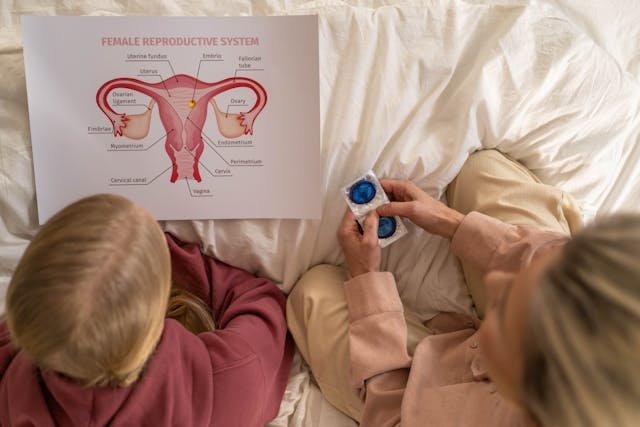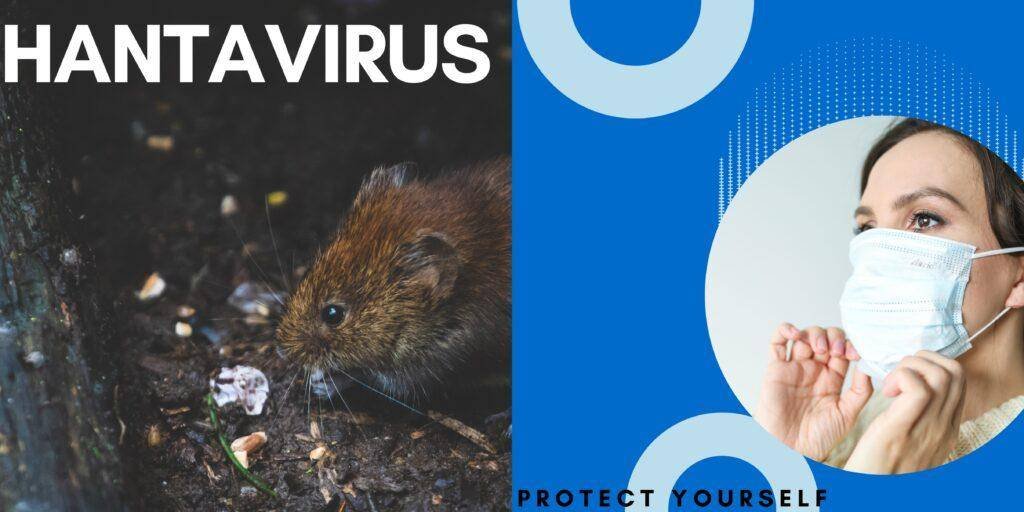Introduction
In the digital age, health misinformation spreads at an unprecedented pace, and few myths have demonstrated this more vividly than the notorious “Blue Waffle” disease. If you’ve spent time searching sexual health topics online, you may have encountered alarming images and stories about this supposed sexually transmitted infection that turns genitalia blue. This comprehensive examination debunks the myth while providing essential information about real sexual health concerns that everyone should know. Understanding the truth about this internet phenomenon is crucial for maintaining accurate sexual health knowledge and avoiding unnecessary anxiety about a condition that simply doesn’t exist in the medical world.
Blue waffle disease is not a real medical condition.
It’s an internet hoax that mixed a shocking edited image with real STI symptoms to create fear and confusion. However, the panic it caused points to something real and important: many sexually transmitted infections are common, sometimes silent, and deserve accurate information, testing, and prevention. (Snopes, WebMD)
What this article will give you
A clear, medically accurate explanation of where the “blue waffle” story came from and why it’s false; the real infections people often mistake for it (causes, signs, and treatments); practical, evidence-based testing and prevention advice; a ready-to-publish FAQ section optimised for search; and trustworthy resources and links you can share with readers.
What is “blue waffle” and how did the rumour start?
“Blue waffle” is an internet urban myth that claims a sexually transmitted infection turns a woman’s vulva or vagina blue, often accompanied by graphic (doctored) photos. The story began as a prank site and viral image bait in the late 2000s and spread through social media, message boards, and misinformation pages. Medical experts and independent fact-checkers investigated the photos and the claims and concluded there is no medical disease called “blue waffle” and no known STI that produces the blue discoloration shown in those fake images. (Snopes, Medical News Today)
Why It Gained Traction
Several factors contributed to the spread of this hoax:
- Shock value: The graphic nature of the images provoked strong emotional reactions
- Lack of comprehensive sex education: Many people lack formal education about STIs
- Internet amplification: Social media algorithms promoted engaging content regardless of accuracy
- Pre-existing STI anxiety: The myth preyed on common fears about sexual health
Why did it spread? The hoax used shock value and manipulated images to provoke searches and shares. In some cases the myth was amplified by people who believed the image or by public figures repeating the claim. The result was confusion and fear in communities with limited access to accurate sexual health education. (WebMD)
Why People Believe in Blue Waffle (And Why It’s Not Real)
The Psychology of Medical Misinformation
Medical misinformation often spreads faster than factual information because it tends to be more sensational and emotionally provocative. Studies have shown that false claims generate more engagement online because they trigger strong emotional responses like fear, disgust, or surprise 1. This is particularly true for sexual health topics, which often carry stigma and shame that prevent people from seeking accurate information from healthcare providers.
The Role of Image Manipulation
The purported “evidence” for Blue Waffle disease consists primarily of digitally altered images. With modern photo editing software, creating convincing but fake medical images has become increasingly easy. Some images may show real but unrelated medical conditions that have been color-manipulated to appear blue, while others are completely fabricated 56.
Medical Authority Responses
Reputable medical institutions worldwide have uniformly debunked the Blue Waffle myth. As Dr. Amy Whitaker, an assistant professor of gynecology/obstetrics at the University of Chicago Hospital, states: “There is no such condition in the medical world that leads to the blue appearance of the vaginal area” 7. A search of PubMed, the world’s largest medical research database, reveals only one result for “blue waffle” – an article explaining why it’s not a real sexually transmitted infection 2.
Simple evidence: reliable sources say it’s not real
Multiple respected health and fact-checking organizations have addressed the myth directly:
- Snopes concluded the story and photos are a hoax and reported that medical professionals had never identified a condition matching the claim. (Snopes)
- WebMD and Medical News Today both explain the hoax and emphasize that while many real STIs can cause discharge, sores, or swelling, none cause a blue-colored vulva as described by the myth. (WebMD, Medical News Today)
So what should worry you? A quick reality check on STI prevalence
Misinformation distracts from real risk. The Centers for Disease Control and Prevention (CDC) estimates that about 1 in 5 people in the U.S. had a sexually transmitted infection on any given day in 2018 — nearly 68 million prevalent infections — which demonstrates that STIs are common and testing matters. (CDC Archive, CDC)
Why the “blue waffle” photos were convincing — and why they’re misleading
The hoax mixed digitally altered images (often grotesque) with a list of real symptoms that do occur in infections: discharge, odor, pain, itching, swelling, lesions. When people see a frightening image next to symptoms they or a partner have experienced, it’s easy to jump to conclusions. But in medicine we rely on clinical examination, lab tests, and trusted guidance — not viral images — to diagnose an infection. (Medical News Today)
Common real infections that cause vaginal symptoms (and how to tell them apart)
Below are common conditions that can cause discharge, odor, pain, sores, or swelling — the symptoms often misattributed to the blue waffle hoax. For each, you’ll find what causes it, typical signs, and basic treatment notes. Always follow your local public health guidance and provider recommendations.
1. Bacterial vaginosis (BV)
- Cause: An imbalance in the normal vaginal bacteria (not a single germ).
- Symptoms: Thin gray or white discharge, strong “fishy” odor (especially after sex), itchiness or irritation. Many people have no symptoms.
- Treatment: Antibiotics such as metronidazole or clindamycin (oral or topical) are commonly used. BV can recur. (CDC)
2. Chlamydia
- Cause: Bacterial infection (Chlamydia trachomatis).
- Symptoms: Often silent — many people have no symptoms. When present: abnormal discharge, burning with urination, pelvic pain. Untreated chlamydia can cause pelvic inflammatory disease (PID) and infertility in people with uteruses.
- Treatment: Curable with antibiotics; early testing and treatment prevents complications. Annual screening is recommended for sexually active people under age 25 and others at increased risk. (CDC)
3. Gonorrhea
- Cause: Bacterial infection (Neisseria gonorrhoeae).
- Symptoms: Can infect genitals, rectum, and throat. Symptoms may include painful urination and abnormal discharge; many infections are asymptomatic. Rising antibiotic resistance is a concern.
- Treatment: Treated with recommended antibiotics; follow updated public health treatment guidelines. Annual screening in sexually active women under 25 (and others at risk) is advised. (CDC)
4. Trichomoniasis
- Cause: A parasite (Trichomonas vaginalis).
- Symptoms: Frothy, yellow-green discharge, itching, discomfort during sex, sometimes painful urination. Men often have no symptoms.
- Treatment: A single course of oral metronidazole or tinidazole cures most cases. Testing and partner treatment are important.
5. Genital herpes (HSV-1 or HSV-2)
- Cause: Herpes simplex virus types 1 or 2.
- Symptoms: Painful blisters or ulcers on or around the genitals, sometimes fever or swollen lymph nodes; many people have mild or no symptoms. Herpes is lifelong; antivirals can suppress outbreaks and reduce transmission. (CDC)
6. Human papillomavirus (HPV)
- Cause: A family of viruses transmitted by skin-to-skin intimate contact.
- Symptoms: Often no symptoms. Some types cause genital warts; other types can lead to cervical or other cancers over years. HPV is very common. Vaccination prevents the types most associated with cancer and many warts. (CDC)
Key differences between the hoax and real infections
Table: Comparison of Fictional Blue Waffle Symptoms vs. Real STI Symptoms
| Symptom | Blue Waffle (Fictional) | Real STIs (Actual Conditions) |
|---|---|---|
| Genital discoloration | Blue or purple | Redness (inflammation), no blue discoloration |
| Unusual discharge | Often described as extreme | Varies by infection (yellow, green, gray, white) |
| Odor | Exaggerated descriptions | Fishy (BV), foul (trichomoniasis) |
| Pain | Severe and dramatic | Mild to severe depending on condition |
| Lesions/sores | Extreme and graphic | Blisters (herpes), warts (HPV) |
- Discoloration to “blue” skin: There is no documented STI that turns vulvar tissue blue the way the fake images show. Any unusual discoloration should be medically evaluated, but the blue waffle image itself is edited and not evidence of a new disease. (Snopes, Medical News Today)
- Shared symptoms: The hoax lists valid STI symptoms (discharge, odor, lesions); that’s what makes the hoax scary — but those symptoms match known, diagnosable conditions. Testing and clinical care treat the real causes. (CDC)
How to respond if you see scary images or read an alarming claim online
- Don’t panic. Graphic images online are often edited or taken out of context. (Snopes)
- Check reliable sources: CDC, WHO, major medical centers (e.g., Cleveland Clinic, Mayo Clinic), or established fact-checkers (e.g., Snopes). (CDC Archive, Snopes)
- If you have symptoms, see a clinician or sexual health clinic — don’t rely on social posts for diagnosis. Testing and treatment decisions should be guided by medical evaluation. (CDC, gettested.cdc.gov)
Testing, diagnosis, and where to go
- Testing methods: Depending on the suspected infection, testing can include urine tests, vaginal/penile/rectal/throat swabs, and blood tests (for HIV, syphilis, hepatitis). Many clinics offer walk-in or confidential testing. The CDC’s “Which STI tests should I get?” page explains recommended testing by risk factors. (CDC, gettested.cdc.gov)
- Who should get tested and how often: Routine guidance suggests at least once for HIV in adults; annual chlamydia/gonorrhea screening for sexually active cisgender women under 25; more frequent testing (every 3–6 months) for people with multiple or anonymous partners. Screening recommendations vary by anatomy and sexual behavior — check local guidelines or speak to your provider. (CDC)
- Where to go: Your primary care physician, community health clinic, Planned Parenthood or similar sexual health clinics, some pharmacies, university health centers, and national portals for finding local testing (e.g., the CDC’s “Get Tested” locator). (gettested.cdc.gov)
Prevention: practical steps that work
- Condoms and dental dams: When used correctly, these dramatically lower the risk of many STIs transmitted by genital fluids (chlamydia, gonorrhea, HIV) though skin-to-skin transmitted infections (HPV, herpes, syphilis) can still spread through uncovered skin. (Verywell Health)
- Vaccination: HPV vaccination protects against the types of HPV most likely to cause cancers and many genital warts. Hepatitis B vaccine is recommended for those not already vaccinated. (CDC)
- Regular testing & honest partner communication: Know your status, ask partners about theirs, and test after potential exposures. Early treatment prevents complications and reduces transmission. (CDC)
- Avoid douching: Douching disrupts normal vaginal flora and increases risk for conditions like BV. (CDC)
When to Seek Medical Attention
Symptoms That Warrant Professional Care
If you experience any of the following symptoms, consult a healthcare provider:
- Unusual genital discharge
- Genital sores, bumps, or blisters
- Painful urination
- Unusual vaginal odor
- Genital itching or irritation
- Pelvic or abdominal pain
What to Expect During an STI Check
A typical STI screening may include:
- Discussion of sexual history and symptoms
- Physical examination of the genital area
- Urine test
- Blood draw
- Swabs from the vagina, cervix, urethra, rectum, or throat
How healthcare professionals view “blue waffle”
Healthcare professionals and sexual health experts treat the “blue waffle” story as a cautionary tale about misinformation. It reminds clinicians and public health professionals that stigma and poor sexual education can allow falsehoods to spread and that accurate outreach — not shaming — improves public health outcomes. (Snopes, Medical News Today)
SEO-friendly, reader-ready FAQs (copy/paste into your post)
Q: Is blue waffle disease real?
A: No. Blue waffle is an internet hoax that used edited photos and frightening descriptions to suggest a new sexually transmitted disease. Medical experts and fact-checkers have debunked it; there is no recognized infection called “blue waffle.” If you have symptoms, seek medical testing and treatment for the actual causes. (Snopes, WebMD)
Q: What do the photos of a “blue” vagina show?
A: The images widely circulated in the hoax are altered or misrepresented. They do not reflect a recognized medical condition. Any unusual discoloration should be assessed by a clinician to rule out real infections, vascular problems, or skin conditions. (Snopes)
Q: What infections cause vaginal discharge, pain, or sores?
A: Common causes include bacterial vaginosis, chlamydia, gonorrhea, trichomoniasis, genital herpes, and, less commonly, skin conditions or allergic reactions. Each has specific tests and treatments. See CDC resources for details. (CDC)
Q: How common are STIs?
A: STIs are common — CDC analyses estimated about one in five people in the U.S. had an STI on any given day in 2018, highlighting the importance of testing and prevention. (CDC Archive)
Q: How do I get tested and where?
A: Testing can be arranged through your primary care provider, family planning clinics, community health centers, university health services, and some pharmacies. The CDC offers a “Get Tested” locator and guidance on which tests to request based on your history. (gettested.cdc.gov, CDC)
Q: Can STIs be cured?
A: Many STIs caused by bacteria or parasites (chlamydia, gonorrhea, trichomoniasis, BV) are curable with antibiotics. Viral infections (herpes, HPV, HIV) are not currently curable, but antiviral treatments and vaccines (for HPV and hepatitis B) can manage risks and outcomes. (CDC)
Q: My partner shared a scary image — should I be worried?
A: Don’t base decisions on viral images. If you or your partner have symptoms (discharge, sores, odor, burning), get clinically evaluated and tested. If you had unprotected sex with a partner who might have an STI, consider testing and temporary abstention from sex until you know your status. (CDC)
Q: How do I talk to a doctor about sexual health without embarrassment?
A: Clinics are used to discussing sexual health and provide confidential care. Be honest about symptoms, partners, and condom use; that information helps guide testing and treatment. Many clinics offer confidential or low-cost testing if privacy or cost is a concern. (gettested.cdc.gov)
Reliable resources and links you can cite or include on your site
(These are authoritative, up-to-date sources readers can trust.)
- CDC — STI prevalence, testing guidance, and fact sheets (general resource): https://www.cdc.gov/sti/about/prevalence.html. (CDC)
- CDC — Which STI tests should I get?: https://www.cdc.gov/sti/about/which-std-tests-should-i-get.html. (CDC)
- CDC — About chlamydia: https://www.cdc.gov/chlamydia/about/index.html. (CDC)
- CDC — About gonorrhea: https://www.cdc.gov/gonorrhea/about/index.html. (CDC)
- CDC — About bacterial vaginosis: https://www.cdc.gov/bacterial-vaginosis/about/index.html. (CDC)
- CDC — HPV information and vaccine: https://www.cdc.gov/hpv/index.html. (CDC)
- Snopes — Fact-check: “Blue Waffle Disease”: https://www.snopes.com/fact-check/blue-waffle-disease/ (useful for debunking the hoax). (Snopes)
Content / SEO notes for site owners (how this article is optimized)
- The article naturally incorporates high-search phrases people use when they worry about the topic: phrases like “blue waffle disease”, “is blue waffle real”, “blue waffle STD”, “symptoms of blue waffle”, “vaginal infection”, “STI testing”, and “STD symptoms” are used in readable, user-focused headings and answers.
- It balances myth-debunking (a high-search topic) with actionable health guidance and authoritative links (which search engines favor).
- The FAQ section targets featured snippets and people-also-ask queries.
- The article provides trustworthy citations (CDC, Snopes, WebMD), which improves credibility for both readers and search algorithms.
Quick checklist for editors — publish-ready
- Title: include the phrase Blue Waffle Disease — Myth, Symptoms, Real STIs & What to Do
- Meta description (suggestion, ≤160 chars): Blue waffle disease is an internet hoax. Learn why it’s fake, which real STIs cause similar symptoms, and how to get tested and treated.
- Suggested structured data (FAQ schema) — add your site’s FAQ markup if your CMS supports it (this helps search engines show Q\&A snippets).
- Internal links: link to your clinic/contact page, STI testing pages, and contraception resources.
- Outbound links: CDC pages and Snopes for source credibility (use the links above). (CDC, Snopes)
Final words — takeaways
- Blue waffle disease is a hoax. Don’t let viral images substitute for medical advice. (Snopes)
- But the symptoms described are real symptoms of real, treatable infections. If you have discharge, smell, itching, pain, or sores, see a clinician and get tested. (CDC)
- Prevention works: use condoms, get vaccinated (HPV), test regularly if you’re sexually active, and talk honestly with partners and your provider. (Verywell Health, CDC)
Disclaimer
This article is for general informational purposes only and does not constitute medical advice, diagnosis, or treatment. If you have symptoms, concerns, or think you’ve been exposed to an STI, seek medical care from a qualified healthcare provider. Recommendations in this article are based on public health sources (CDC and other trusted organizations) but may not reflect the most recent local guidelines; always consult local public health authorities or your clinician for personalized care. (CDC Archive, CDC)
Our Top Picks-Explore & Enjoy
If you enjoyed this post, we’ve hand-picked my favorite, tried-and-true recommendations for Relationships, Pet care, Travel, evidence-backed wellness,and much more. Go to your relevant niche below and start improving love, health, and pet happiness today.
Travel ✈️🛣️
Travel smarter, not harder. Why spend hours scouring the web to piece your trip together? I use a one-stop-shop for scoring the best prices on everything from rental cars and flights to all-inclusive resorts. It’s my secret for turning travel dreams into reality without blowing the budget. Explore here
Beauty & Health 🌿⚕️
Cut through the hype and find supplements and everyday wellness tools that deliver. Discover how to read labels, select high-quality products, and incorporate them into simple habits for lasting results. Find here
Pets 🐶🐱
From leash manners and crate comfort to picky-eater solutions and seasonal care — learn straightforward training techniques and simple nutrition tips that prevent problems and boost wellbeing. Practical advice every pet parent can follow. click here
Relationship❤️💕
Feeling distant from your partner? Discover practical conversation starters, small daily rituals, and conflict tools that help restore trust and warmth. No jargon — just realistic steps you can start using today.click here
Be on-line🛜💻
For Bloggers and writers—-Boost your website’s performance with ultra-fast servers, 24/7 expert support, and a beginner-friendly control panel—all at unbeatable prices. Whether you’re launching a blog, online store, or portfolio, it makes it effortless to get online and scale as you grow. Ready to level up? 👉 Grab your exclusive deal here!









